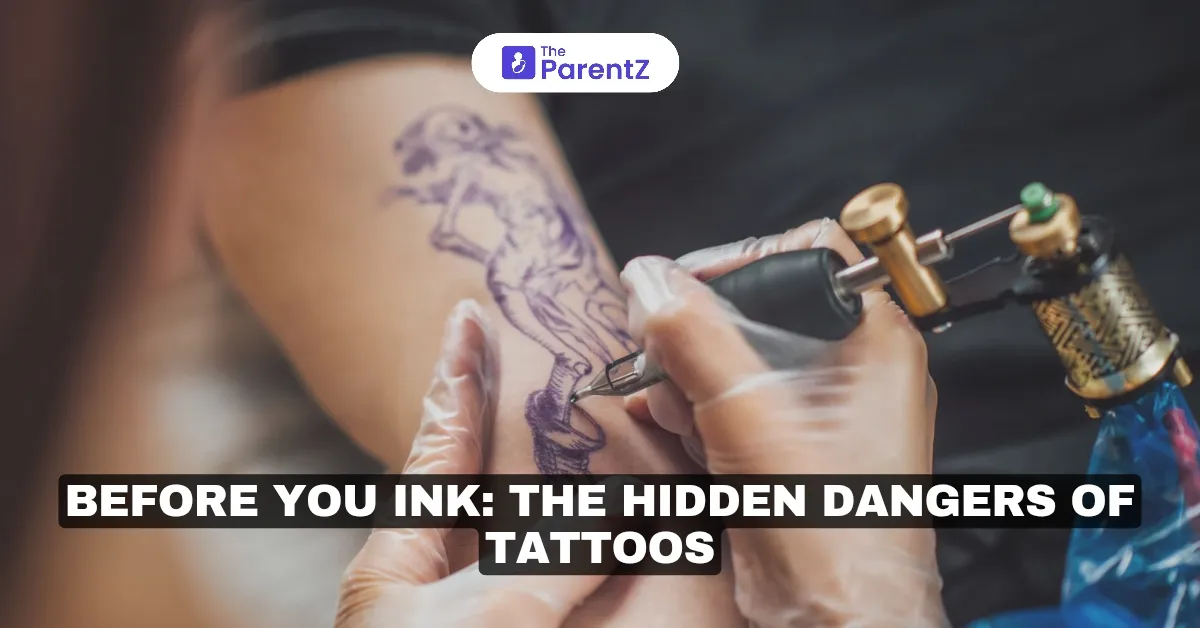Tattoos have become incredibly popular. From tiny, delicate designs to full sleeves, they're a form of self-expression, a way to commemorate a moment, or just something cool to have. And while they might seem like no big deal, especially with so many people sporting them, it's crucial to understand that tattoos come with potential risks. This isn't about scaring anyone but about giving you the information you need to make informed decisions, especially if you're a parent guiding a young person considering their first tattoo.
Think of a tattoo as a permanent piece of jewelry. You wouldn't just get any piercing or put on any ring without thinking about it, right? Tattoos deserve the same level of consideration, if not more because they're much harder to remove than a ring.
The Physical Risks: More Than Skin-Deep
Let's start with the most obvious: the physical risks. Getting a tattoo includes repeatedly puncturing the skin with needles and injecting ink. This process, while seemingly simple, can lead to several complications:
- Infections: This is probably the most common risk. Think about it: you're creating open wounds. If the equipment isn't properly sterilized, or if aftercare isn't meticulous, bacteria can get into the bloodstream and cause infections, ranging from minor skin irritations to serious, even life-threatening, conditions like blood poisoning (sepsis). Sharing needles is a major no-no, as it can transmit diseases like hepatitis B and C and HIV.
- Allergic Reactions: Tattoo inks contain various metals and dyes. Some people can have allergic reactions, which might show up immediately or even years later. These reactions can range from a simple rash to more severe skin problems. Sometimes, the reaction can be so bad that the tattoo has to be removed, which is a painful and expensive process.
- Scarring: Some people are prone to keloids, which are raised scars. Tattooing can trigger keloid formation, especially if you have a history of them. Even without keloids, improper tattooing techniques can lead to scarring.
- Granulomas: These are small bumps that can form around tattoo ink particles. They're basically your body trying to wall off the foreign substance. While usually not harmful, they can be unsightly and sometimes require treatment.
- MRI Complications: This is less common, but some tattoo inks contain metallic particles that can interact with the powerful magnets used in MRI scans. This can cause burning or swelling in the tattooed area. It's crucial to inform your doctor about any tattoos before an MRI.
- Skin Cancer: While more research is needed, some studies suggest a possible link between tattoos and an increased risk of certain types of skin cancer. This is another reason why choosing a reputable tattoo artist who follows safety protocols is essential.
The Mental and Emotional Side: More Than Just a Design
Beyond the physical risks, there are also psychological and emotional aspects to consider:
- Regret: Tastes change, and what seemed like a great idea at 18 might not feel so great at 30 or 40. Tattoo removal is painful, expensive, and often doesn't completely erase the tattoo. Think long and hard about the design and its placement before you commit. Is it something you'll still be happy with years down the line?
- Social Stigma: While tattoos are more accepted now, there are still some professions and social circles where they might be frowned upon. Consider how a visible tattoo might affect your career prospects or social interactions.
- Body Image: Sometimes, people get tattoos to feel better about their bodies. However, if the tattoo doesn't turn out as expected, or if it fades or blurs over time, it can actually worsen body image issues.
Making Informed Decisions
Before getting inked, it’s crucial for teens—and their parents—to conduct thorough research. This includes understanding the types of inks used, potential health risks associated with those inks, and finding reputable artists who prioritize safety and hygiene.
Encouraging open discussions about these topics can help teens feel supported while also making informed decisions about body art.
Conclusion
Getting a tattoo is a big decision. It's not something to be taken lightly. By understanding the potential risks and having open conversations, you can help yourself and the teens in your life make informed choices and avoid future regrets. Remember, a tattoo is forever, so think before you ink!








Be the first one to comment on this story.